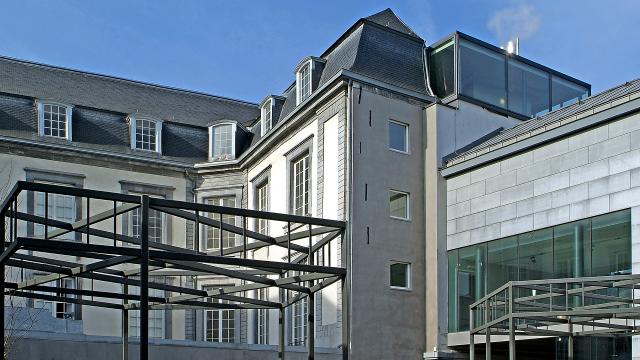
An elegant neo-classical mansion, the Hayme mansion is the perfect example of a French mansion, as part of the great tradition of Parisian mansions from the end of the 18th century. Its typology deviates completely from the mansions of Liège, such as the Ansembourg mansion or the patrician houses of Rue Hors-Château.
Attributed to the architect Barthélemy Digneffe (1724–1784), and built for Jean-Baptiste de Hayme de Bomal, it was passed on to his son, Joseph-Romain d’Ansembourg. Between 1793 and 1815, it was the seat of the prefecture of the department of Ourthe, with various famous figures staying there. These included Napoléon I, who stayed there twice: first with Joséphine de Beauharnais, while he was first consul, and later with Marie-Louise of Austria, after being proclaimed emperor.
After housing been the seat of the Dutch administration between 1815 and 1830, the building became the property of Joseph Lemille, who gave it to the city of Liège in 1884, leading to the creation of the Arms Museum.
The dual access to this mansion is a unique feature. The entrance on rue Féronstrée gave access to a courtyard, around which common areas were developed (kitchens, stables, etc.), which allowed access to the residential areas and the apartments on the first floor via a monumental staircase. The "beautiful" façade overlooked quai de Maastricht, which was then a large garden on the banks of the Meuse.
Through assimilation, this residence is part of the tradition of French mansions that are "between courtyards and gardens". The location of the rooms on the first floor, the "main or noble floor", resembles Italian palaces. Its interior layout and its refined decorations allow similarities to be drawn with some Parisian mansions, such as the Rodelin or Gallifet mansions.
Restored in 2001 by the p.HD Committee, the white and gold decorations have recovered their initial gilding, and the façades once again display the whiteness of the neoclassical monuments, which was very characteristic of the time. This is one of the finest examples of this architecture, which, in this case, borders on perfection.